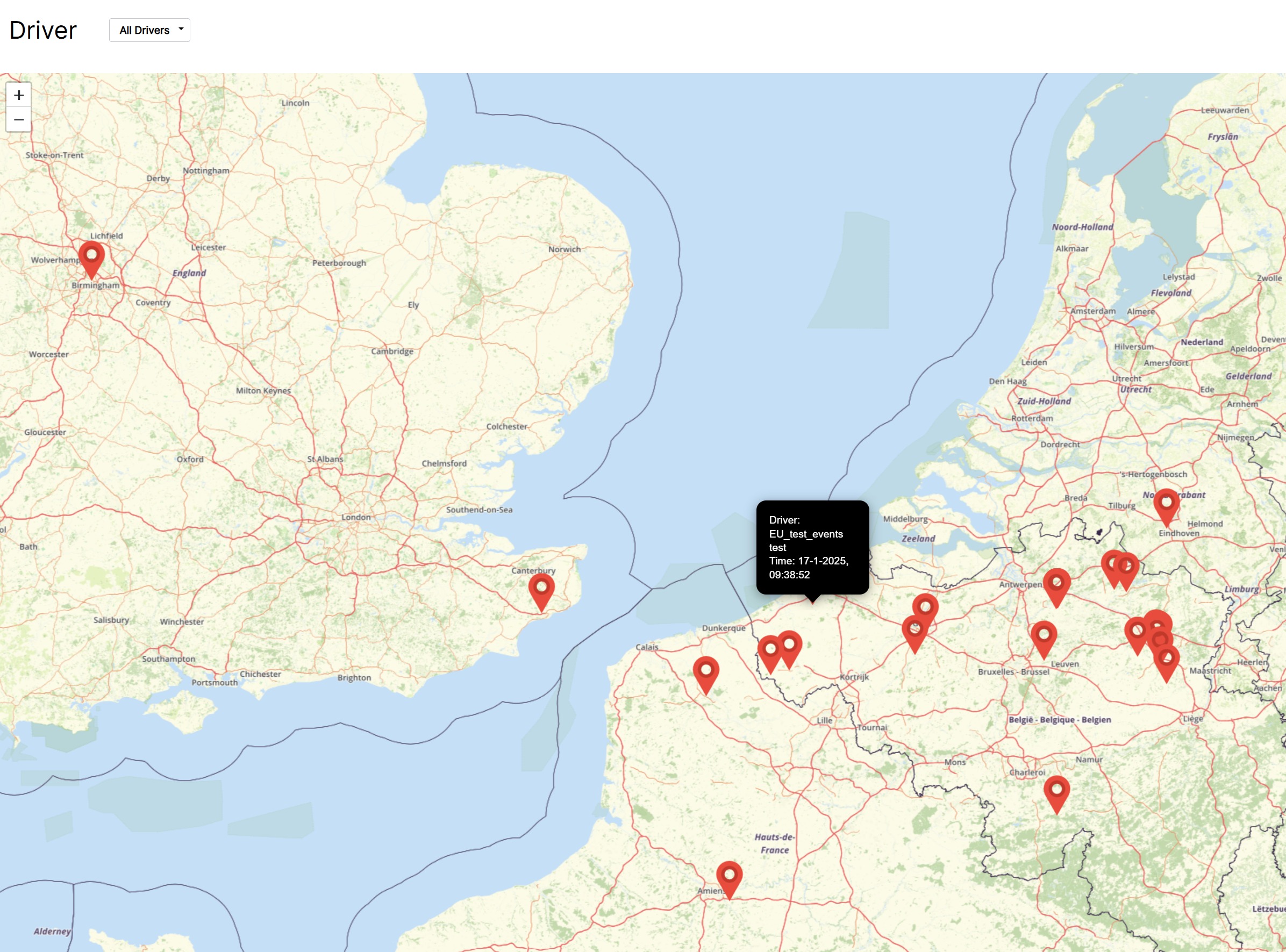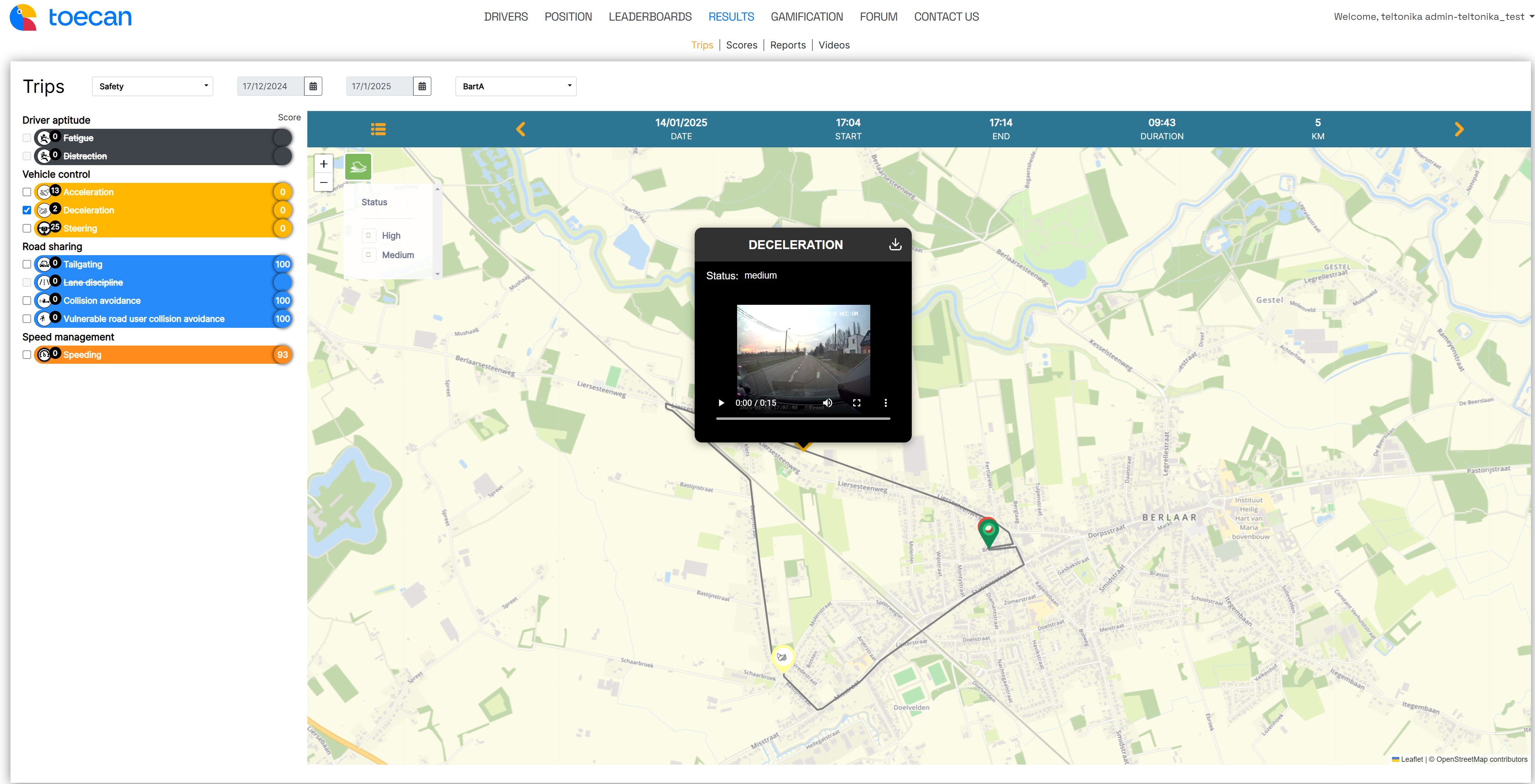Our posts last year showcased how the flespi architecture enables projects across various industries, from agriculture to machinery rental markets, or even e-toll systems and general aviation. But it’s best to let those who use your platform day in and day out tell the story.
These are the people making our Helpbox buzz like a beehive full of ideas. Yes, we’ve decided to hand over our blog to the developers, giving them a chance to share their personal experiences beyond the chat sessions. Today, our host is Bart de Vos, Technical Expert at Toecan, and you’ve probably already guessed which country we’re headed to.
Highlights
Located in Belgium, Toecan provides its smart solution to enhance the safety and eco-performance of professional drivers. Their idea was to leverage video telematics for automated scoring and combine it with a gamified approach to coaching and e-learning. The product was developed as part of the EU Horizon 2020 i-DREAMS project, in collaboration with multiple universities across Europe. While the solution is applicable to all professional drivers, it is highly tailored to the Belgian trucking market.
Challenges
During the initial stages of the project, a custom hardware and backend solution was developed and supplied by a partner. However, as the project approached the end of its development cycle and prepared to launch in 2021, the impact of the COVID pandemic hit hard. The global chip shortage shattered the supply chain, leaving Toecan without the necessary tools for data collection.
As part of a joint PhD project between Toecan and the Institute of Mobility (IMOB) at Hasselt University, the challenge of implementing a new data collection platform was tackled with several key criteria:
Fast development, high performance, and low maintenance
Scalability as a primary focus
Future-proof design through modularity
Leveraging industry-leading technologies wherever possible
After some research and experimenting with various approaches and solutions, flespi was selected as the telematics engine. The main reasons were:
Quick setup as a replacement for self-hosted servers, reducing server maintenance to near zero. As a bonus, many protocols were already implemented, saving precious development time.
Extensive protocol support and message standardization, providing flexibility in terms of hardware selection — crucial during times of supply chain stress.
API-first approach, clear documentation, and API testing tools that enabled seamless integration with other backend components.
flespi console, which proved indispensable during development as well as for troubleshooting.
Solution
Our solution is primarily designed for trucks equipped with GPS tracking devices connected to the FMS CANbus and tachograph. These devices collect detailed driving behavior indicators, such as excessive speeding, harsh braking, steering, and acceleration. They also gather eco-driving parameters, including fuel consumption, cruise control usage, coasting, and idling.
The GPS trackers are paired with a dashcam capable of remotely sending media (videos/pictures) of relevant driving events. Additionally, the dashcam features AI capabilities, such as detecting following distances and issuing collision warnings.
Unlike basic GPS tracking solutions, this setup requires a high volume of parameters to be transmitted at frequent intervals (1-5 seconds on average). This is where flespi’s performance shined, excelling both in its data reception capabilities (channels and supported protocols) and in the speed and throughput of its API.
Initially, flespi was adopted as a low-maintenance and cost-efficient alternative to self-hosted servers, with the data being streamed to AWS IoT and a DynamoDB database via a stream. Most other tasks, such as triggers, data storage/retrieval, and calculations, were handled on a serverless AWS backend. As the team became more familiar with our platform and its capabilities, it made sense to migrate many of these tasks directly into flespi. This shift resulted in reduced operational costs and improved performance.
The introduction of webhooks, combined with calculators, really opened the door to moving more tasks to flespi and implementing new features. We can now detect events and (near) crashes live, in real-time. Triggers such as 'trip', 'trip start', and 'alarms' have all been seamlessly migrated to flespi. Thanks to tools like the PVM generator and AI support bot, the setup process was incredibly straightforward. This transition allowed us to stop using AWS IoT altogether, which was a huge saving. Migrating from their own database for telematics data storage to flespi's device storage and API was another major milestone, though the introduction of media support has also been a game-changer. We can now offer a broader range of flespi-supported dashcams to our clients. More importantly, we are in the process of migrating from our self-hosted video reception service to flespi. This shift will enable us to shut down our last self-hosted servers.
Feedback
Overall, flespi has proven to be an exceptional partner. The range of available tools, documentation, and wide protocol support make me feel like a kid in a toy store — I can just pick and combine whatever I need to solve any telematics problem. This has allowed me to focus on developing features that add real value to our product, instead of getting bogged down by deployment and maintenance concerns. // Bart de Vos, Technical Expert at Toecan

